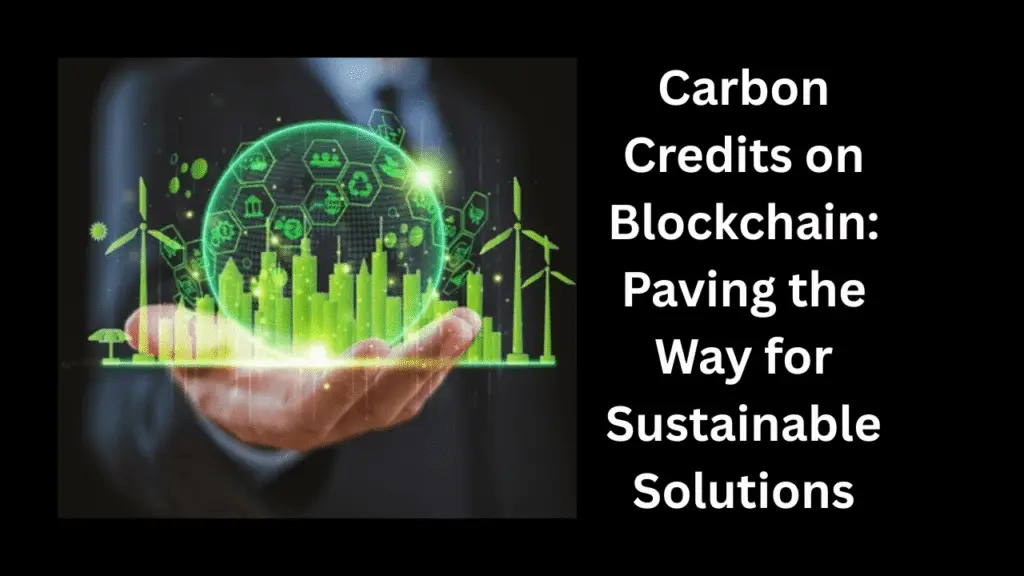What if saving the planet could be as easy as using technology to track and trade pollution reductions? That’s exactly what blockchain is making possible with carbon credits. Carbon credits are like permission slips that let companies release a certain amount of greenhouse gases. Companies can reduce their emissions and earn credits, or they can buy credits from others who are reducing pollution. By using blockchain, the process of managing and trading carbon credits is becoming faster, more secure, and more efficient.
In this blog, we’ll explore what carbon credits are, how blockchain technology is improving them, and why this is an important step toward a sustainable future. By the end, you’ll see how blockchain can help fight climate change, and if you’re curious about more innovations like this, don’t forget to subscribe to Web3Wonders.US.US.US to stay in the loop!
What Are Carbon Credits?
Let’s start with the basics. Carbon credits are a way to limit the amount of greenhouse gases, like carbon dioxide, that companies can release into the atmosphere. Each credit represents one ton of carbon dioxide that can be emitted.
Here’s how it works:
Companies are given a certain number of carbon credits based on emission limits set by governments or organizations.
- If a company emits less carbon than its limit, it can sell its extra credits.
- Companies that need to emit more carbon than their limit can buy these extra credits.
- This system encourages businesses to reduce their emissions because they can earn money by selling unused credits.
Why Is Carbon Trading Important?
Carbon trading is a key tool in the fight against climate change. By putting a price on carbon emissions, it motivates companies to find cleaner and more sustainable ways to operate. However, the current system has some problems:
Lack of Transparency: It’s hard to verify the details of carbon trades.
High Costs: Managing and trading carbon credits can be expensive and slow.
Fraud Risks: The system is vulnerable to fake credits and double counting.
This is where blockchain technology comes in.
How Blockchain Improves Carbon Credits
Blockchain is a game-changer for carbon credits. It’s a secure and transparent digital ledger that records transactions in a way that can’t be changed or hacked. Here’s how it helps with carbon trading:
1. Transparency
Blockchain makes the entire process visible to everyone involved. For example, when a company earns carbon credits, the blockchain records the details—like who owns the credits and how they were earned. This ensures that no credits are fake or double-counted.
2. Efficiency
Traditional carbon trading involves a lot of paperwork and middlemen, which slows things down. Blockchain automates the process, making it faster and more cost-effective.
3. Trust
With blockchain, everyone can trust the system because the data is secure and can’t be altered. This builds confidence among businesses and governments.
Real-World Examples of Blockchain in Carbon Trading
Blockchain is already being used to improve carbon credits. Here are two examples:
1. IBM’s Green Horizon Project
IBM is using blockchain to track carbon credits and help companies meet their sustainability goals. The project creates a transparent and trustworthy system for tracking emissions and trading credits.
2. ClimateTrade
ClimateTrade is a platform that uses blockchain to connect companies with carbon credit projects. Businesses can easily buy credits to offset their emissions, while projects like reforestation or renewable energy get the funding they need.
Benefits of Blockchain for Carbon Credits
Blockchain offers several advantages for managing carbon credits:
Transparency: Everyone can see how credits are earned and traded, reducing fraud.
Efficiency: Smart contracts automate the process, saving time and money.
Global Reach: Blockchain makes it easy to trade credits across borders.
Environmental Impact: By improving the system, blockchain encourages more companies to reduce their emissions.
Challenges to Overcome
While blockchain has great potential, there are still challenges to address:
1. Technical Barriers
Not all companies understand how to use blockchain, so education and training are needed.
2. Initial Costs
Setting up blockchain systems can be expensive, especially for small businesses.
3. Regulatory Uncertainty
Governments need to create clear rules for using blockchain in carbon trading.
Despite these challenges, blockchain’s benefits make it a promising solution for improving carbon credits.
The Future of Blockchain and Carbon Credits
As blockchain technology continues to evolve, its role in carbon trading will grow. In the future, we might see:
More Accurate Data: Advanced sensors and tools could directly feed emissions data into the blockchain, making the system even more reliable.
Global Standards: International agreements could create a unified system for trading carbon credits, using blockchain to ensure fairness and transparency.
Wider Adoption: As costs go down and awareness grows, more companies and countries will use blockchain for carbon credits.
By making carbon trading more efficient and trustworthy, blockchain can help accelerate the global transition to a greener, more sustainable future.
Why Blockchain Matters for Sustainability
Climate change is one of the biggest challenges we face today, and we need innovative solutions to tackle it. Blockchain is one of those solutions. By improving carbon credits, it encourages companies to take action and reduce their emissions.
For businesses, it means a faster, cheaper, and more secure way to manage their environmental impact. For the planet, it’s a step toward a cleaner and healthier future.
Join the Wonders of the Web—Subscribe to Web3Wonders
Are you excited about how blockchain is helping the fight against climate change? At Web3Wonders.US, we’re passionate about exploring the ways blockchain and Web3 technology are shaping a more sustainable world.
Subscribe to Web3Wonders.US.US.US today to stay updated on the latest insights, case studies, and innovations. Whether you’re a business leader, an environmentalist, or just curious about technology, our blogs will keep you informed and inspired.
Be part of the solution—join us on the journey to a greener, blockchain-powered future. 🌱

